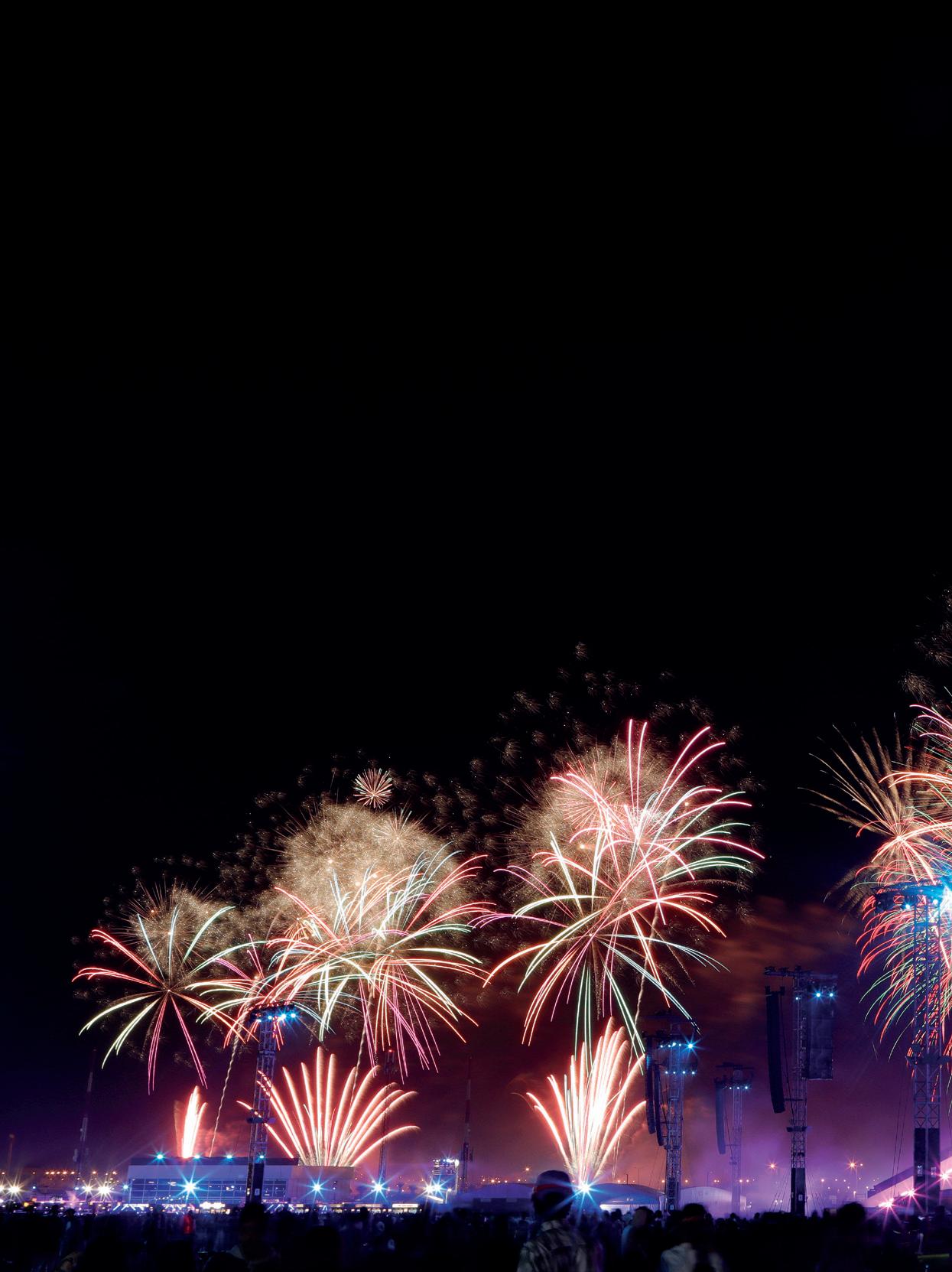
12 minute read
R-E-S-P-E-C-T
MDLBEAST’s Soundstorm 2021 made a huge impact on the Middle East over four days in the desert. More than 732,000 visitors attended the festival, which featured a new anti-harassment campaign called Respect and Reset (R&R). Here, Judy Bec, head of operations at Boomtown Fair, reveals all about how she devised and delivered R&R, a zero-tolerance policy on harassment designed to make festivalgoers feel safe
Tell us about MDLBEAST’s Respect
and Reset (R&R) project and how the project came about
I started working with the MDLBEAST team in August 2021. I was introduced to them by The Event Safety Shop early in the summer following discussions they had been having regarding the issue of harassment and violence particularly against women and girls at events in Saudi Arabia. As organisers, they are passionate and highly committed to having a positive impact on women’s experiences at events in the Kingdom.
MDLBEAST decided to create the R&R programme. It wasn’t called Respect and Reset when we first started, and we got through several creative agencies before my colleague and I came up with the title ourselves.
In Saudi Arabia, men and women have only been legally allowed to mix in public since 2018. Therefore, attending largescale crowded events is still new to them. Being in a crowded environment presents opportunities for harassment and other bad behaviours that have not previously existed, and just as in the UK, these opportunities are exploited.
The main difference between harassment at events in the UK and Saudi Arabia is that the men’s behaviour is bolder. Following the first MDLBEAST event in 2019, the social media campaign #MDLBEASTharassment trended across the region, and still in 2021, women who were asked about their primary safety concern at events cited sexual harassment as number one. Clear that whilst this is a wider, societal issue (and not just in Saudi Arabia), the MDLBEAST management resolved to bring the subject front and centre in the conversation from the early planning of Soundstorm 2021. Even if they couldn’t solve the problem at societal levels, they could start the education process through events, and aim to improve the experience of events for women.
Who pulled the R&R team together?
MDLBEAST reached out to The Event Safety Shop for advice on how to tackle the problem and tasked them with taking on the project in collaboration with the MDLBEAST team. They, in turn, engaged myself and Tami Richter [SXSW’s director of event staffing and resources] to develop the programme because both of us are event operations managers with experience in implementing anti-harassment initiatives at our own events.
????????? SOUNDSTORM 2021

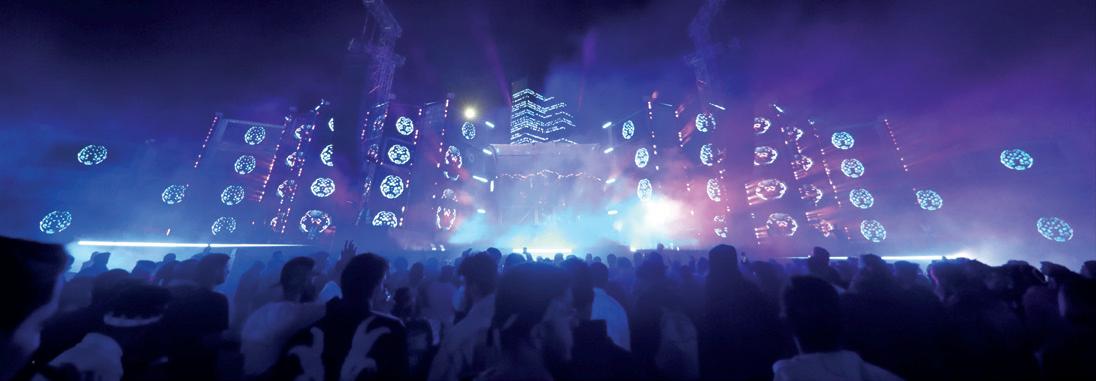
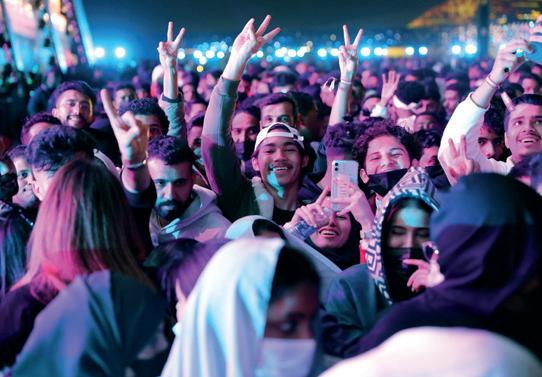
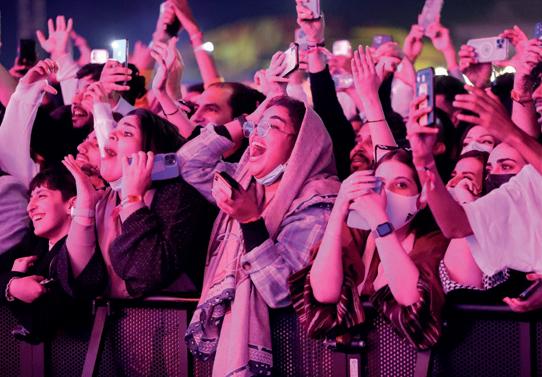
To support us in the process, MDLBEAST formed an anti-harassment crossdepartmental team, an awesome team of young and feisty Saudi women (and a token man to help smooth the way), who helped us to bridge the cultural knowledge, awareness, and language gap, develop the education campaign and support the operation.
Initially, during the planning phase, R&R was Tami and myself and five members of the MDLBEAST team.
What was the R&R team’s remit?
The R&R remit was to confront all forms of harassment. However, the most prolific form of harassment in Saudi Arabia is against women, therefore this was seen as the priority.
Being asked to lead this project felt like an incredible opportunity for me. My work at festivals in the UK is broad operations, most recently with a security focus; sexual assault, rape and harassment have formed some of the many issues we are concerned about. I never have the luxury, however, to stop and reflect on the issue from a 360-degree perspective. The R&R project was just that, and the chance to bring in all elements of good practice that we had witnessed at events in the UK and USA.
We created a framework. Our priorities were to educate the audience in advance on what harassment is and the consequences of committing it; encourage reporting during the event; and nurture an event community response by promoting the active bystander message. We then backed this up with an on-site enforcement operation.
How big was the R&R team?
The on-site R&R operation comprised 1,200 “ambassadors”, providing a visible presence as a deterrent and to assist any victims of harassment; plus, a multiskilled team of 20 UK and US incident responders and a small team of R&R Safe Space managers. We also took a small event control team to manage the R&R control desk. The international team was made up of security staff, safety advisors, ex-Police, ex-military, and experienced event professionals, sexual violence support experts and control room operators. Whilst we were not fully clear of the extent of the problem, we elected to engage a strong, mixed-gender, kick-arse international team so we were ready for whatever happened.
If you witnessed harassment, what protocols and procedures did you have in place to manage it?
We established a full operational plan, setting out a tiered approach for defining incidents of harassment with a corresponding escalation procedure and strategy. The escalation process ranged from intervention with no further action, issuing a warning, ejection, and Police arrest. The outcome depended on the nature of the harassment, the wishes of the victim and whether we had detained the perpetrator.
An important cultural change that R&R brought to the region was in putting the victim first and adopting a “believe” response. We set up four R&R spaces as dedicated areas where people could report incidents of harassment and seek a safe space and support to process the experience. This flew in the face of normal policing practices and working closely with undercover female police on site gave us an amazing opportunity to showcase other ways of working.
What kinds of harassment were witnessed and how was this managed?
The types of harassment ranged from hair-touching (highly distressing for Saudi women); unwanted verbal sexual attention – comments, flirting; taking video footage without permission (this is illegal in Saudi Arabia); pulling off clothing, especially the abaya [full-length robe] and hair covering; dancing too closely; arse groping; grabbing the vagina and sexual assault by penetration.
The audience demographic was majority male. The small number of women at the event received a lot of attention from the male audience members. The ambassadors and response teams were mostly engaged with deflecting unwanted attention away from the women.
How did the R&R project run alongside security plans? Was it integrated with the security policy/plans?
MDLBEAST looked to integrate the R&R programme across the production and operations. Therefore, the R&R operation ran as a parallel security operation, supported by the security teams, but with a single focus. A significant benefit of this was that we were able to support each case, giving them all the time they needed. This allowed security to move on.
As R&R, we followed the security policies and plans regarding escalation, and supported the security operation as needed.
A core team of UK and US events professionals worked with local companies and resources, teaching them about anti-harassment and events. Can you explain more?
We worked closely with the MDLBEAST Saudi team, which was an amazing experience. We bridged across the teams from MDLBEAST and the American production company because we were working so closely across multiple teams and the aim was to integrate R&R into all elements of the event. The staffing company, which provided the ambassadors, was a local company, and we experienced challenges in the different ways of working and expectations in Saudi Arabia compared to working in the UK and US. We both found ourselves on a steep learning curve. The language barrier proved to be an impediment when working directly with the R&R ambassadors.
We provided bespoke anti-harassment training to the ambassadors the weekend prior to the event, supplemented with on-the-ground briefings. The biggest challenge was the lack of event awareness, and the understanding of what to expect and how to navigate event working, such as moving through crowds. Of the 1,200 ambassadors, we can confidently say that there was a core of about 400 highlyengaged and committed staff who really delivered the R&R programme and who gained a greater insight and knowledge in events, harassment, and victim support.
The MDLBEAST R&R team worked alongside us closely and got actively involved in responding to incidents of harassment during the shows. Recognising that the R&R project was not going to eliminate societal harassment in four days, it was created with a long view, and part of that needs to be the passing of knowledge and experience on to the local Saudi staff. 2021 was the start of the process.
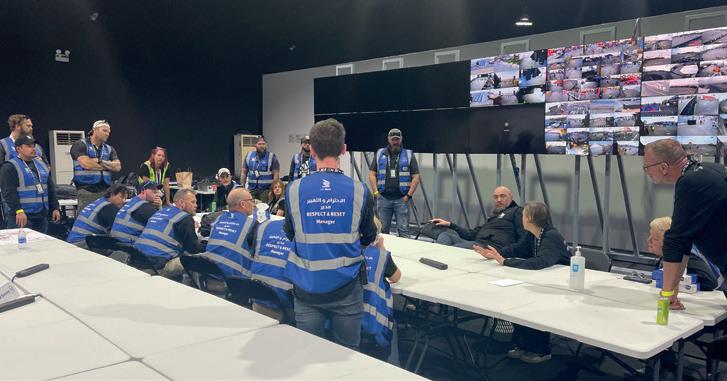
What lessons did you learn?
After the first night, we understood a lot better the behaviour of the audience, the areas where we needed to focus our efforts, and we adjusted our deployment and operation accordingly. The wider learnings that we took away were that the harassment behaviour was very opportunist, that the men were fully aware of the inappropriateness of their actions, but were quick to deny wrongdoing, and that by offering highly visible/accessible reporting mechanisms and effective support (and consequences), people reported incidents. The most exciting learning that I took away was that after four nights of running the programme and offering support to the female festivalgoers, there was a tangible sense of empowerment amongst the women. Knowing that we had their backs, the Saudi women quickly tapped into their suppressed rage, and they started to fight back and defend themselves.
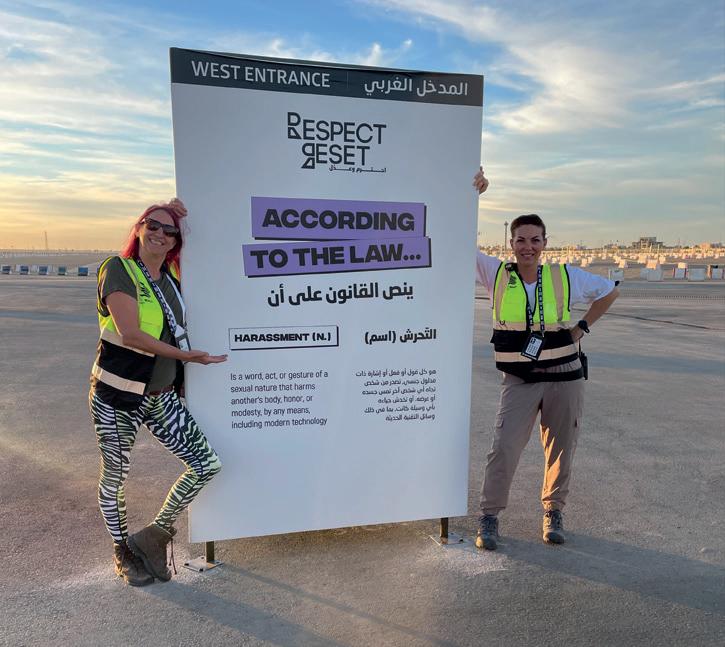
TEAM R&R
INTENSE PLANNING MEETINGS
Did you learn anything working on MDLBEAST that you can take and implement on a UK festival site?
The programme that we implemented for Soundstorm is highly transferrable to events elsewhere in the world. The nuances of the language may change, but the problem is the same everywhere, and the solutions are equally applicable. It was a huge opportunity to test strategies.
Has your MDLBEAST experience opened your eyes/mind to new ideas in terms of harassment and how could UK security teams adopt these measures?
Going out on the ground to deliberately monitor for harassment and apply techniques that we had been teaching the ambassadors, particularly around the active bystander model, was very enlightening. I had to work through several of my own internal resistances and biases/assumptions to engage with and deflect potential harassment situations. Exploring the options showed me how incredibly effective the bystander techniques can be, and that this is an area we should really focus on for UK security teams at events this year.
EVENTS WILL RETURN WITH VIGOUR
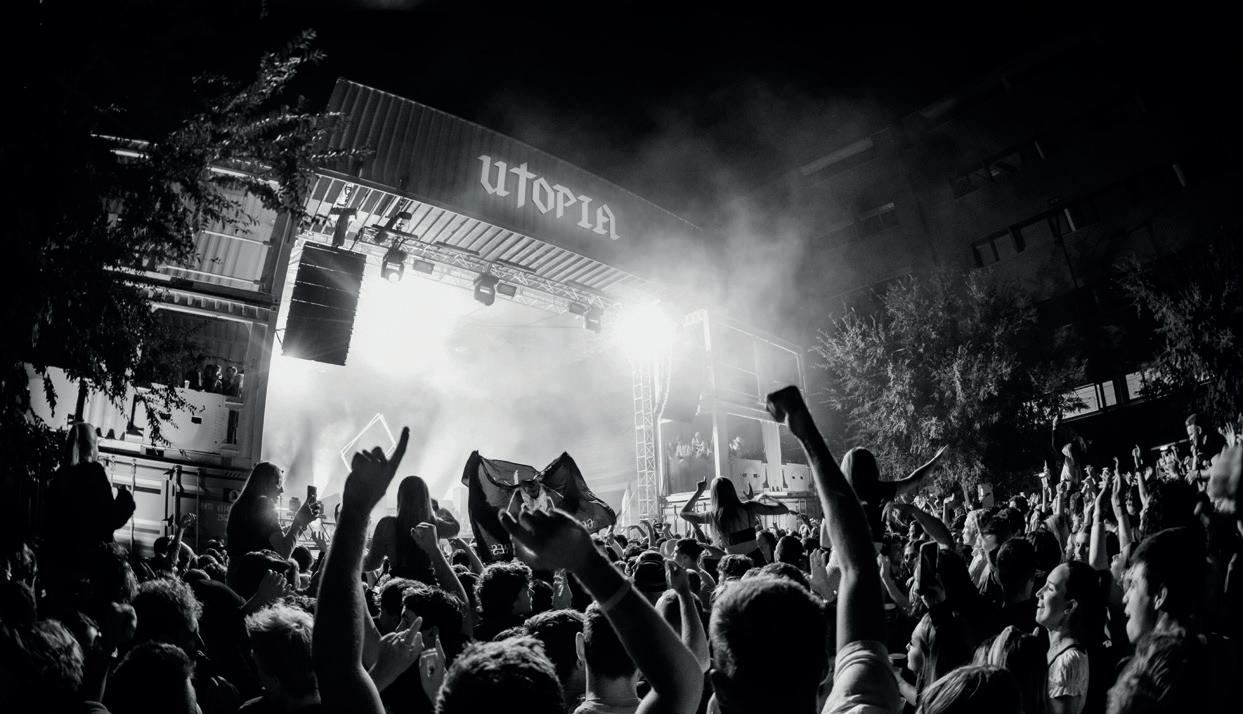
© Danny Howe
Understanding event risks
What lies ahead for live events and festivals? Tysers Insurance Brokers’ Tim Rudland and Tim Thornhill provide their thoughts on the year ahead
It’s nearly two years since the first announcements of closures, lockdowns, and cancellations but finally we can now cautiously look to the future with more positivity. As restrictions are being lifted in many countries, tickets are selling out and there is consumer appetite to get back to enjoying life at festivals and events, which bodes well for 2022.
Whilst there’s a backdrop of increased insurance rates and uncertainty about the supply chain continues, there’s still much to be excited about. We expect events to return with vigour and anticipate a level of pent-up demand that we haven’t experienced in a generation.
SUPPORTING EVENT ORGANISERS
Entering what will be an extremely busy season, insurance protection is critical. We expect there will continue to be some gaps in insurance cover (such as elements of COVID-related cover for cancellation policies) because of the huge shift in insurers’ appetites. However, we continue to work on solutions.
Now it’s more important, than ever before, that we get to know our clients and understand their event’s risks. Insurers will want to see that the organisers are taking every element of risk management seriously. Together, we can extract those positive features to help us demonstrate to insurers that an event is a risk they would want to insure and therefore, offer their most favourable terms.
PRODUCTS TO THINK ABOUT
Another cancellation risk which organisers should be aware of is National Mourning. Any period of national mourning could cause your event to be cancelled. This cover is often excluded from a standard cancellation policy. Those running events should check with venues and suppliers and examine contracts to see if they include a clause which details an occurrence of national mourning. You can then gauge any potential exposure and decide whether to offset the risk with cancellation insurance protection. In general, the more days you need to insure for national mourning, the more expensive the policy.
In addition to the pitfalls of sourcing a robust and cost-effective cancellation policy, we wish to highlight an oftenoverlooked element of cover for organisers: Motor insurance.
If a vehicle or item of plant is driving on a road (and the definition of a road is very broad; according to the Road Traffic Act 1988, section 192(1) a “road” means any highway to which the public has access) then your Public Liability Policy will exclude any third-party liability.
Whilst there are shades of grey, for example there could be a bridleway running through your site or the requirement to drive into a public area during a show, both these examples could fall foul of the exclusion, meaning any damage or injury caused would be excluded by your Public Liability Insurance.
Short period motor cover is not readily available, and most insurers require registrations/VINs before they’ll even quote.
We have an exclusive motor facility to plug this gap. Insurers allow us to provide you with a blanket cover note so all vehicles declared are insured, meaning there’s no waiting around once vehicles are delivered!
We insured more than 500 UK festivals in 2019 and continue to work hard to help our clients access the insurance cover they need, at the best possible premium. Our aim is to continue to support the industry and its connected supply chain throughout this crucial period of recovery.









